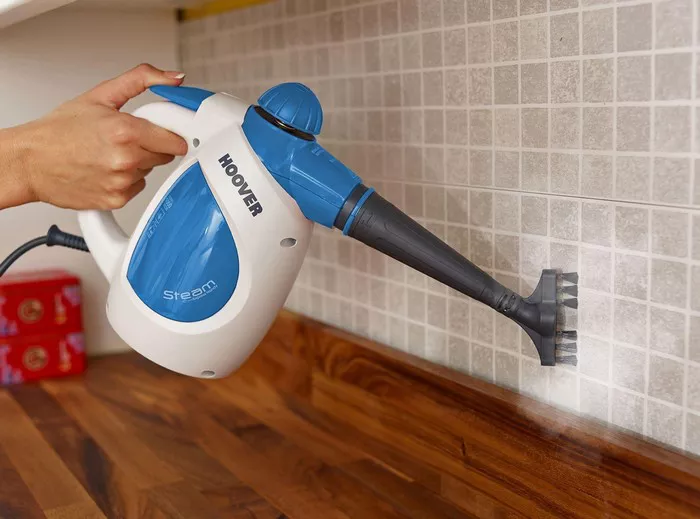As a cleaning machine expert with years of experience in the industry, I have witnessed firsthand the evolving landscape of home cleaning technologies. Among the various tools available, steam cleaners have surged in popularity due to their promise of chemical-free sanitization. This has led many to question: Do steam cleaners really sanitize?
The Power of Steam: How it Kills Germs
To understand the sanitizing potential of steam cleaners, it’s essential to grasp the basic science behind how they work. Steam cleaners generate high-temperature steam, which is then directed onto surfaces through a nozzle. The key to their effectiveness lies in the heat they produce. When steam reaches temperatures of around 212°F (100°C) or higher, it can effectively kill a wide range of pathogens by denaturing their proteins and disrupting their cellular structures.
How Steam Cleaners Work
Steam cleaners operate by heating water in a boiler or a reservoir to produce steam. This steam is expelled through a nozzle, brush, or other attachment, depending on the type of surface being cleaned. The high temperature and pressure of the steam enable it to penetrate pores and crevices, reaching areas that traditional cleaning methods might miss.
The Effectiveness of Heat
The critical factor in the sanitizing ability of steam cleaners is the heat they produce. At temperatures around 212°F, steam can denature the proteins in bacteria and viruses, effectively killing them. This process is similar to how boiling water sterilizes medical instruments or cooking food kills harmful microorganisms.
Effectiveness of Steam Cleaning
What Steam Cleaning Can Kill
Steam cleaning is particularly effective against a variety of common household pathogens, including:
Bacteria: Such as E. coli, Salmonella, and Staphylococcus aureus.
Viruses: Including the flu virus and even some strains of coronavirus.
Dust Mites: Which can exacerbate allergies and asthma.
Mold Spores: Certain molds and mildews can be reduced or eliminated with steam cleaning.
Factors Affecting Effectiveness
Several factors influence the effectiveness of steam cleaning:
Steam Temperature: The higher the temperature, the more effective the steam is at killing germs. Steam should be at least 212°F to ensure proper sanitization.
Contact Time: For steam to sanitize effectively, it needs to remain in contact with the surface for a sufficient period. Quick passes may not provide the necessary exposure.
Surface Type: Hard, non-porous surfaces are more effectively sanitized by steam than porous or heavily textured surfaces.
Initial Dirt Level: Steam cleaning is more effective on surfaces that are free from heavy dirt and debris. Pre-cleaning may be necessary to achieve optimal results.
See also: Does Steam Cleaning Remove Stains from Upholstery?
Limitations
Despite its effectiveness, steam cleaning has some limitations:
Crevices and Behind Objects: Steam may not reach deep into narrow crevices or behind large objects.
Certain Spores: While steam can kill many types of mold, some spores may be resistant and require additional treatments.
Using Steam Cleaners for Sanitization
Proper Technique for Best Results
To maximize the sanitizing power of steam cleaners, follow these steps:
1. Pre-Clean: Remove any large debris or heavy dirt from the surface to allow the steam to penetrate more effectively.
2. Slow and Thorough Steaming: Move the steam cleaner slowly over the surface to ensure adequate contact time.
3. Maintain Contact Time: Keep the steam in contact with the surface for at least 10-15 seconds to allow the heat to kill germs effectively.
Surfaces Suitable for Steam Cleaning
Steam cleaners can be used on a variety of surfaces, including:
Hard Surfaces: Tile, grout, countertops, and sealed hardwood floors.
Soft Surfaces: Upholstery, mattresses, and carpets (with appropriate attachments).
Areas Requiring Extra Attention
Pay particular attention to:
Corners and Crevices: Use attachments designed to reach into tight spaces.
High-Touch Surfaces: Doorknobs, light switches, and remote controls should be steamed regularly to reduce germ transmission.
Steam Cleaning vs. Chemical Disinfection
Benefits of Steam Cleaning
Steam cleaning offers several advantages over traditional chemical disinfectants:
Eco-Friendly: Steam cleaning uses only water, reducing the environmental impact associated with chemical cleaners.
No Harsh Chemicals: This makes it safer for households with children and pets, as there is no risk of exposure to toxic substances.
Effective Against Allergens: Steam can effectively reduce allergens like dust mites and pet dander.
Limitations of Steam Cleaning
However, steam cleaning is not without its drawbacks:
Not Always Effective on All Germs: Some pathogens, particularly certain spores and hardy bacteria, may require chemical disinfectants for complete eradication.
Surface Compatibility: Some materials, like certain plastics and delicate fabrics, may be damaged by high temperatures.
See also: Does Steam Cleaning Remove Pet Odors
Combining Methods
For heavily soiled areas or those requiring extra disinfection, a combination approach can be effective:
1. Pre-Clean with Disinfectant: Use a chemical disinfectant to break down heavy grime and kill the most resilient pathogens.
2. Follow with Steam Cleaning: Use steam to sanitize and remove any remaining residues, ensuring a thorough clean.
Conclusion
In conclusion, steam cleaners are a powerful tool for sanitizing a variety of surfaces in your home. They effectively kill bacteria, viruses, dust mites, and some mold spores, provided they are used correctly. While they have some limitations, especially in reaching tight crevices and against certain pathogens, proper technique and a combination of cleaning methods can overcome these challenges. Steam cleaning offers a chemical-free, eco-friendly alternative to traditional disinfectants, making it a valuable addition to your cleaning arsenal. For best results, ensure you use the steam cleaner slowly and maintain sufficient contact time with surfaces, focusing on high-touch and hard-to-reach areas.

